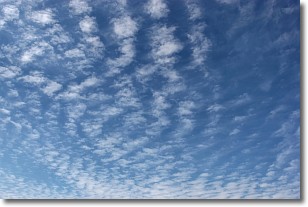Weather Alert in Arizona
Extreme Heat Warning issued June 19 at 1:32AM PDT until June 19 at 10:00PM PDT by NWS Las Vegas NV
AREAS AFFECTED: Lake Havasu and Fort Mohave; Northwest Deserts; Lake Mead National Recreation Area; Death Valley National Park; Western Mojave Desert; Eastern Mojave Desert, Including the Mojave National Preserve; San Bernardino County-Upper Colorado River Valley; Western Clark and Southern Nye County; Las Vegas Valley; Lake Mead National Recreation Area
DESCRIPTION: * WHAT...Expect high temperatures around 110 in Las Vegas, Pahrump, and Barstow, around 105 in Kingman, 110 to 115 in the Colorado River Valley, and up to 120 at Furnace Creek in Death Valley National Park. * WHERE...Lake Mead National Recreation Area, Lake Havasu and Fort Mohave, Northwest Deserts, Death Valley National Park, Western Mojave Desert, Eastern Mojave Desert, San Bernardino County-Upper Colorado River Valley, Western Clark and Southern Nye County, and Las Vegas Valley. * WHEN...Until 10 PM PDT /10 PM MST/ this evening. * IMPACTS...Heat related illnesses increase significantly during extreme heat events, especially when overnight low temperatures remain warm. This results in little to no time to recover from the heat.
INSTRUCTION: Drink plenty of fluids, stay in an air-conditioned room as much as possible, and stay out of the sun. Check in with relatives and neighbors. Do not leave young children and pets in unattended vehicles. Car interiors will reach lethal temperatures in a matter of minutes. Take extra precautions when outside. Wear lightweight and loose fitting clothing. Try to limit strenuous activities to early morning or evening. Take action when you see symptoms of heat exhaustion and heat stroke. To reduce risk during outdoor work, the Occupational Safety and Health Administration recommends scheduling frequent rest breaks in shaded or air conditioned environments. Anyone overcome by heat should be moved to a cool and shaded location. Heat stroke is an emergency! Call 9 1 1. Monitor the latest forecasts and warnings for updates.
Want more detail? Get the Complete 7 Day and Night Detailed Forecast!
Current U.S. National Radar--Current
The Current National Weather Radar is shown below with a UTC Time (subtract 5 hours from UTC to get Eastern Time).

National Weather Forecast--Current
The Current National Weather Forecast and National Weather Map are shown below.

National Weather Forecast for Tomorrow
Tomorrow National Weather Forecast and Tomorrow National Weather Map are show below.

North America Water Vapor (Moisture)
This map shows recent moisture content over North America. Bright and colored areas show high moisture (ie, clouds); brown indicates very little moisture present; black indicates no moisture.

Weather Topic: What are Cirrocumulus Clouds?
Home - Education - Cloud Types - Cirrocumulus Clouds
 Next Topic: Cirrostratus Clouds
Next Topic: Cirrostratus Clouds
Cirrocumulus clouds form at high altitudes (usually around 5 km)
and have distinguishing characteristics displayed in a fine layer of
small cloud patches. These small cloud patches are sometimes referred to as
"cloudlets" in relation to the whole cloud formation.
Cirrocumulus clouds are formed from ice crystals and water droplets. Often, the
water droplets in the cloud freeze into ice crystals and the cloud becomes a
cirrostratus cloud. Because of this common occurrence, cirrocumulus cloud
formations generally pass rapidly.
Next Topic: Cirrostratus Clouds
Weather Topic: What are Cirrus Clouds?
Home - Education - Cloud Types - Cirrus Clouds
 Next Topic: Condensation
Next Topic: Condensation
Cirrus clouds are high-level clouds that occur above 20,000 feet
and are composed mainly of ice crystals.
They are thin and wispy in appearance.
What do they indicate?
They are often the first sign of an approaching storm.
Next Topic: Condensation
Current conditions powered by WeatherAPI.com




